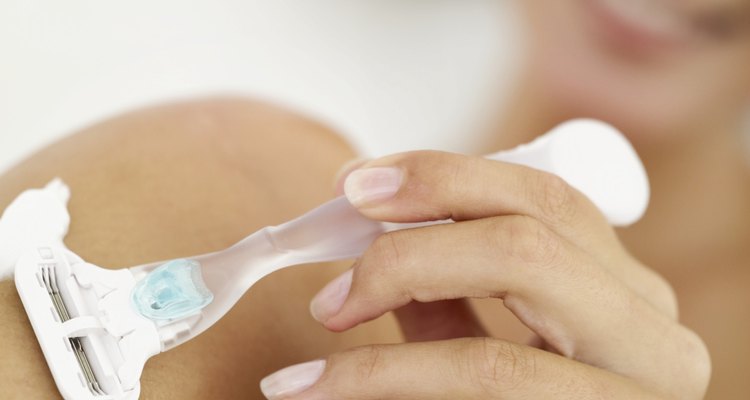
If you're sick of getting nicked when you're shaving, don't toss your razor out just yet. Dry, rough skin is a magnet for trouble during a shaving session, but you can ward off wounds with a bit of pre-shave prep work. By treating skin right and switching up your technique, you'll score the super-smooth, cut-free shave you always wanted.
Get Wet
It's a big mistake to shave when your skin is dry -- you're likely to get nicks, razor burn and even ingrown hairs when scraping away at dry skin. To reduce your risk, take a warm shower or bath before shaving. The warm water hydrates skin and softens hairs, making them easier to remove. Ideally, soak in the water for at least 10 minutes. If you can't shower, dampen a washcloth with warm water and wipe your skin with it. It's not as effective as bathing, but it's better than shaving dry.
Exfoliate Your Skin
Exfoliation wipes away layers of dead skin cells, allowing your razor's blade to glide through hairs with less to get in its way. If you have normal skin, gently run a skin-care brush over the area you want to shave every other night. For sensitive skin, use a damp washcloth and a creamy cleanser two to three times per week. Smooth moisturizer over the exfoliated area when you've finished. For oily skin, apply glycolic-acid cleanser to a skin-care brush, then smooth it over your skin daily. Alternatively, use glycolic-acid pads. This acid also helps to cut through pore-clogging grease. Glycolic acid boosts sun sensitivity, so wear sunscreen whenever you go outside.
Select the Right Razor
Old, dull razor blades are more hazardous. You need to press down harder to shave off hair when you use one, so you're more likely to end up with cuts or a rash. If you shave daily, you should switch your razor blade for a new one every week. For a smooth shave, try a multi-blade razor, which cuts hair more quickly and easily than single-blade types do. These razors offer between two and five blades. Five-blade razors, though, aren't ideal for sensitive skin, as they tend to irritate it even more. Choose a razor with an aloe or moisturizing strip for even more skin protection. If you have trouble using a disposable razor, consider trying an electric razor instead. Electric razors are less likely to cut you, but they still might irritate your skin. Additionally, you may not get a super-close shave with an electric razor, and they're often more costly to maintain.
Perfect Your Shaving Technique
Smooth a generous layer of shaving cream, lotion or gel over skin before you begin. This helps the blade to glide over skin and leave it unharmed. If you're shaving your legs, stroke the razor across skin against the direction of hair growth. For your face, shave in the direction of hair growth. Rinse the blade under running water after each stroke to remove built-up shaving cream and hair; this allows the blade to run unfettered over your skin, increasing the odds that you'll walk away cut-free. After a few strokes, feel your skin. If you still feel some hair, reapply cream or gel and go over the skin with the razor one more time. When finished, thoroughly rinse the shaving cream from your skin under running water. Pat your skin dry with a towel. Smooth an alcohol-free aftershave or lotion over the skin to soothe any irritation.
Related Articles

How to Get a Closer Electric Shave
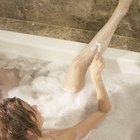
How to Get Smooth Shaved Legs When Hair ...
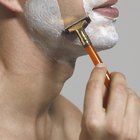
How to Stop Facial Redness From Shaving

How to Clear Up Red Bikini Line Bumps
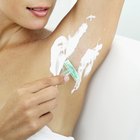
How to Keep From Getting Ingrown Armpit ...

How to Get Rid of Irritation After ...
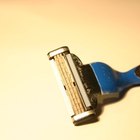
How to Use Noxzema for Shaving
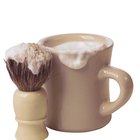
Proper Way to Shave a Mustache

How to Prevent Underarm Bumps

How to Use Wet/Dry Shavers
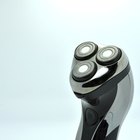
How to Shave With an Electric Razor

How to Make Goosebumps From Shaving Go ...

Remedies for Shaving Bumps on Inner ...

How to Shave Leg Stubble

How to Make Shaving Last Longer

How to Get Rid of Razor Bumps Around ...

How to Get a Smooth, Bald Look

Shaving Armpits the Correct Way
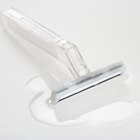
How to Shave Pubic Hair on Men

How to Take Care of Painful Ingrown Hair
References
Resources
Writer Bio
Melissa King began writing in 2001. She spent three years writing for her local newspaper, "The Colt," writing editorials, news stories, product reviews and entertainment pieces. She is also the owner and operator of Howbert Freelance Writing. King holds an Associate of Arts in communications from Tarrant County College.
Photo Credits
Stockbyte/Stockbyte/Getty Images